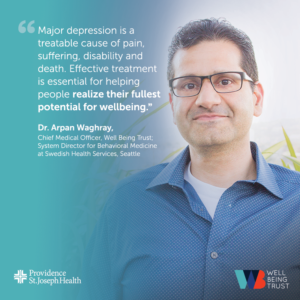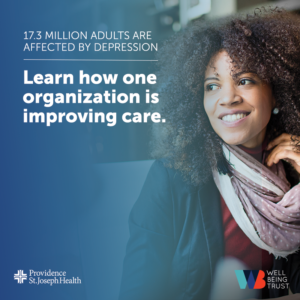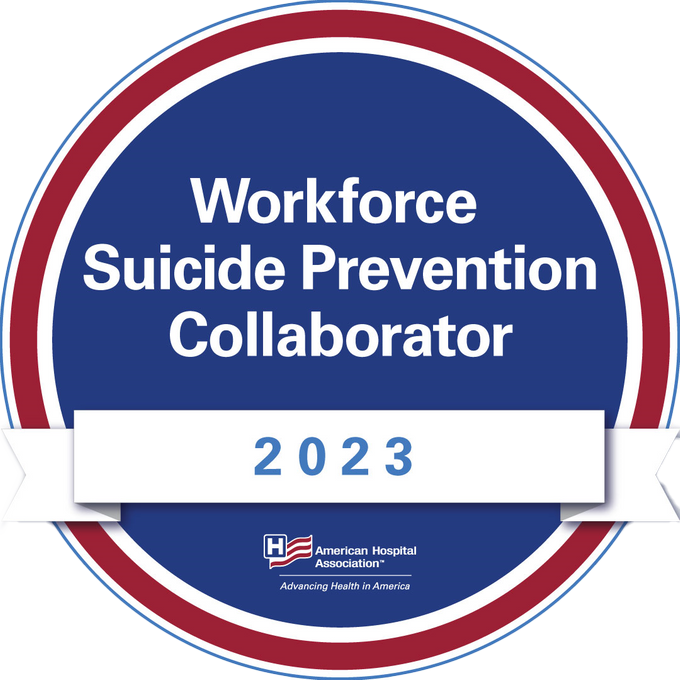A standard of care for depression: Addressing one of America’s most common mental illness can be challenging for primary care providers. This is one example of practitioners working to change that.
One of the most common mental illnesses in the United States, depression affects about 17.3 million adults — more than the number of people who have survived cancer. The disease deeply impacts people’s health and their ability to live a good, productive life. And it often goes hand-in-hand with other diseases, like cancer, heart disease and HIV. When people with these medical conditions also develop depression, the cooccurrence can greatly affect their response to medical treatment and their ability to recover.
“Major depression is a treatable cause of pain, suffering, disability and death,” says Dr. Arpan Waghray, chief medical officer for Well 
Yet only about half of adults with depression are treated for the disease, he says, and only about 20 percent to 40 percent of those patients show substantial improvement.
Creating a pathway
All of this makes depression an important condition for health systems to tackle head on. To that end, Providence St. Joseph Health gathered input from primary care physicians across its systems and developed what is known as a care pathway for depression. Integrated into the health system’s electronic medical records, the pathway aimed to guide physicians through screening patients for depression and diagnosing the disease; treating the disease or connecting patients to care online or via a specialist; and helping patients manage medication and symptoms.
The goal, Waghray says, was to enable doctors to give patients with depression a consistent standard of care and, ultimately, bring the disease into remission for more patients.
“Primary care providers are frequently asked to do more with less,” Waghray says. “The depression care pathway was created with providers in mind, to help make the right thing easy to do.”
Within three months of rolling out the pathway in one clinic, 30 percent of patients had been screened for depression—but the goal is to expand further and wider.
In June, a new workgroup convened for the first time to begin assessing the existing pathway and determining the steps needed to improve it and create what they are calling the Depression Care Pathway 2.0.
Whole person care
An important component of the new effort will be assuring doctors that they will be supported throughout the process of identifying and treating patients with depression, says workgroup co-leader Dr. Megan Chiarelli, Providence St. Joseph’s medical director for behavioral health integration into primary care in Southern California.
The pathway will have to be flexible, taking into account regional differences and the patient-physician relationship, says Vanessa Casillas, PsyD, director of psychology in Oregon and Southwest Washington for Providence Medical Group, a five-state network of clinics and physicians. The group’s Oregon practices have behavioral health providers embedded into their medical-home teams, but other regions are at different points in the process of developing and implementing behavioral health care in their primary care clinics, Casillas says.
“The depression pathway will likely be really helpful too in places that don’t have embedded behavioral health providers,” she says. “The pathway provides guidance based on best practices for everything from screening for depression to a prescribing algorithm for medical providers when needed. It also leaves room for clinical judgment and shared decision-making based on the patient’s history and current status. There’s usually a number of relevant factors to consider.”
Workgroup co-leader Dr. Howard Mun, PharmD, who directs Clinical Quality and Governance for Providence Saint Joseph Health’s Physician Enterprise, serving 9,000 providers and over 900 ambulatory clinics, says the team working on this project will also keep in mind the changing nature of technology.
“We knew, when we developed the original pathway, that what we had then wasn’t going to be our final destination. We knew technology and the electronic medical records were going to change,” he says. “And they really have. As we develop Depression Care Pathway 2.0, our electronic medical records experts will help us imagine the ideal solution and guide us through what the technology can do so we can implement our clinic workflows and standards around that.”
Waghray puts it this way: “If we know that, when we put certain best practices in place, more people with depression can get better, it’s our moral imperative to take those steps.”






